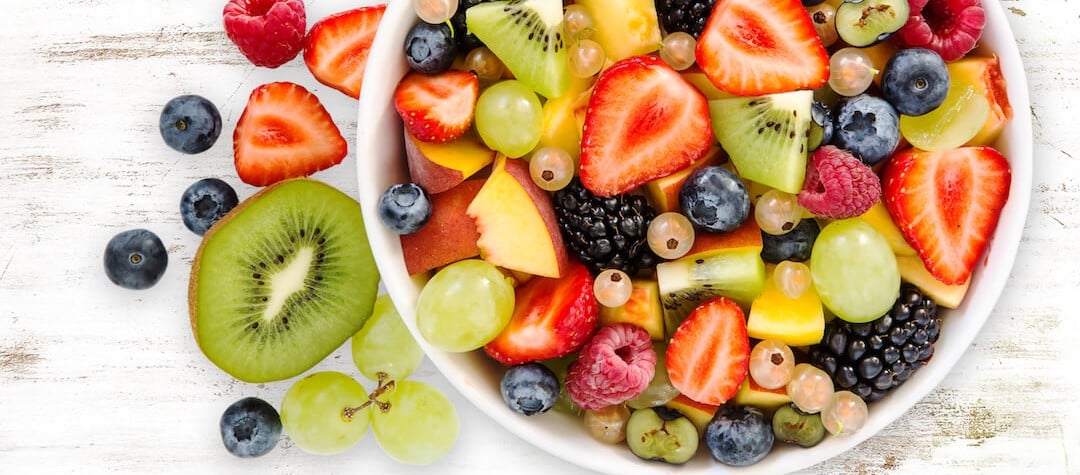To keep healthy, it is important that we consume a balanced diet — which simply means getting enough quantities from each of the different food groups every day. But what are the basic, or 'foundation foods' we should be putting on our plates?
The six fundamental food groups or foundation foods that compose a healthy balanced diet are:
- Protein
- Carbohydrates
- Fat
- Water
- Vitamins
- Minerals
Everyone has different requirements, depending on their sex, age and activity levels but the key point to remember is that your diet should be balanced and meals should contain foods from each group.
Protein
Protein is essential for growth, repair and overall body function. Our age, sex and activity levels determine our body’s daily protein requirements and the following guidelines indicate the approximate amounts of protein that adults (male and female) need to consume daily:
| Activity |
Average protein requirements: |
| Sedentary |
0.75g (1.65lb) per kg of bodyweight |
| Aerobic training |
1.5g (3.3lb) per kg of bodyweight |
| Resistance training |
1.8 (3.96lb) to 2.0g (4.4 lb) per kg of bodyweight |
Carbohydrates
Carbohydrate is our primary fuel. The human body stores carbohydrate in the form of glycogen in the muscles and liver to provide energy for activity and to maintain life. Carbohydrate is generally classified as ‘simple’ or ‘complex’.
-
Simple carbohydrates - Provides a quick energy ‘hit’ when you are hungry. Healthy sources include fresh, dried and canned fruit. Confectionary is a less healthy choice.
-
Complex carbohydrates - Provides ‘slow release’ energy, avoiding the peaks and troughs of eating simple carbohydrate. Good sources include wholemeal bread and pasta, brown rice and fresh vegetables.
Fats and oils
Contrary to popular belief, fat is not always the villain of the piece! Fat in your diet is essential for neural (nerve) function and serves many additional functions including:
-
Providing insulation
-
Protecting the body’s organs
-
Protecting the brain
-
Transporting certain vitamins
However, it is important to eat the right sort of fat, which means knowing the difference between good fats and bad fats.
Good fats
Unsaturated fats, which are characterized as usually being liquid at room temperature. Examples include fish oils from fish such as salmon, mackerel, sardines, together with unrefined vegetable oils like sunflower oil.
Bad fats
Saturated fats, which are characterized as usually being solid at room temperature. Examples include animal fats and butter.
Water
Our bodies contain a very high percentage of water, anything from 45 to 73 per cent dependent upon age. This water is evenly distributed throughout the body and so for optimum health, keeping well-hydrated is very important. Maintaining hydration is something that you need to work at throughout the day and if you struggle to keep well topped up, try some of the following strategies:
-
Start the day with around half a litre (17 oz) of water with your breakfast.
-
Keep a bottle of water in your car.
-
Substitute water for some of your usual cups of tea and coffee.
-
Limit your intake of caffeinated drinks (tea, coffee and cola).
-
Limit your alcohol intake (alcohol will dehydrate you).
-
If your work is office-based, keep a water bottle on your desk.
-
Carry a bottle of water with you at the gym or when training outdoors.
Vitamins and minerals
These are categorised as ‘micronutrients’ and are vital to maintain health and eating a varied and balanced diet, containing plenty of fresh produce is the best way to ensure that you are getting sufficient quantities.
To make sure that you are getting enough vitamins and minerals, take the '20-a-day test'. Count up how many different foods you eat each day and try to make that total equal 20 or more. If you find that you’re falling a little short, gradually add in more fruits, vegetables and natural, unprocessed foods to get your total up to 20.
How to get the right amounts of each food group
Not only is a balanced diet about eating a variety of foods, eating the right food in the right quantities is fundamental to a successful healthy eating plan. As we are bombarded constantly with new diet approaches, fads and advice on when, what and how much we should be eating — it can sometimes be a little confusing to know what exactly we should be putting on our plate.
A simple rule of thumb is the 50-25-25 approach where you aim to fill your plate with:
-
50 per cent vegetables
-
25 per cent lean protein
-
25 per cent complex carbohydrate (rice, pasta, potatoes)
Apply it to all your meals and you will be well on your way to achieving all the food groups and in the right amounts.














